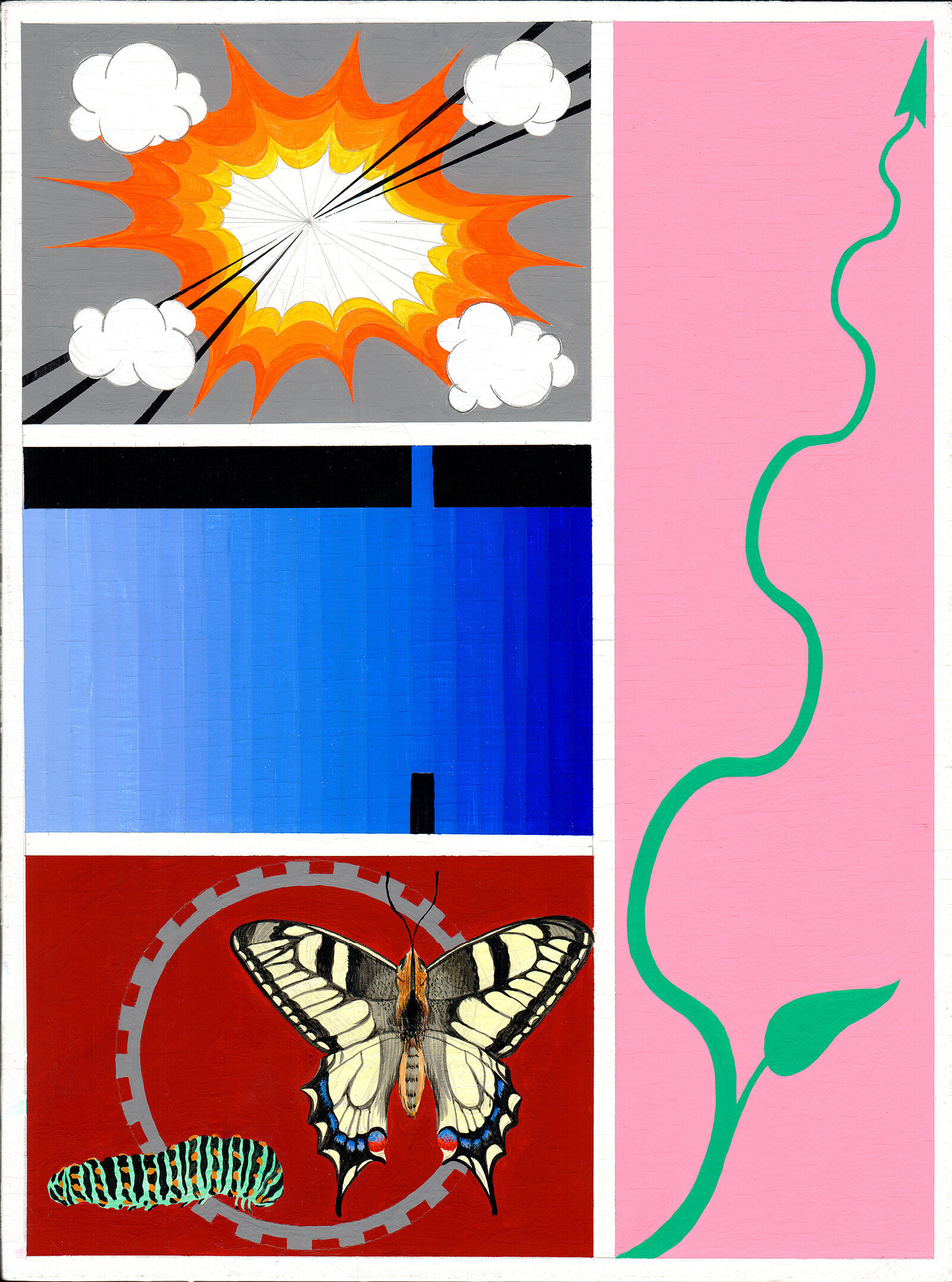April 28–September 17, 2017
Leuvenstraat 32
2000 Antwerp
Belgium
Hours: Tuesday–Sunday 11am–6pm
T +32 3 260 99 99
info@muhka.be
No one knows what doesn’t yet exist. But identifying possible, probable and preferred futures can help us understand the present and the past. The plural is important; we should not try to predict one single future. Just like art, futures studies (also called foresight) is more than a discipline. It is practice and method, a tour of understanding rather than a path to knowledge.
A Temporary Futures Institute wants us to think critically about things to come rather than looking back at how previous periods imagined “the future.” How shall exhibitions stimulate our thinking? Must they become immersive environments to lure us away from our screens? How autonomous will art and artists be in relation to the rest of the world?
This exhibition, co-curated by Anders Kreuger and Dr Maya Van Leemput, combines visual displays by professional futurists with works (mostly new works premiered here) by contemporary artists, to see what these two contexts might have in common—and how they might question each other.
The exhibition is composed around the “four futures” that Professor Jim Dator of the University of Hawaii proposed in the late 1960s. He identified “continued growth,” “collapse,” “discipline” and “transformation” as generic images we may use to envision preferred futures.
The overall setting for A Temporary Futures Institute is a painting on all but two of the walls in the exhibition by Alexander Lee (French Polynesia, 1974, supported by Air Tahiti Nui and the Thyssen-Bornemisza Art Contemporary Academy). It unites three Oceanian motifs: the sea itself; the leaf of the breadfruit tree; the mushroom cloud of the nuclear arms tests.
The futurists and artists in the first segment dedicated to continued growth interpret and critique the image of the future as “more of the same.” They visualise ongoing social processes in moving images with or without spoken narration (Agence Future, Žiūra) or meditate on progress through time in a pavilion-like installation for paintings picking out “lines” or “threads” or “strings” of action (Roos).
Agence Future (Belgium, consisting of Dr Maya Van Leemput, 1969, and Bram Goots, 1971); Nina Roos (Finland, 1956, supported by Frame, Contemporary Art Finland, courtesy of Galerie Forsblom, Helsinki); Darius Žiūra (Lithuania, 1968).
Instead of graphic representations of disaster, the second segment looks at the “before and after” of collapse, with under-the-skin glimpses of the American psyche that seem to prefigure both 9/11 and Trumpism (Auder), the calm spectacle of nature reclaiming a failed housing estate in the tropics (Gill) or a reality where all that was “normal” has evaporated (Center for Postnormal Policy & Futures Studies).
Center for Postnormal Policy & Futures Studies, represented by its director Professor Ziauddin Sardar (Pakistan/UK, 1951) and its deputy director John A. Sweeney (US, 1977); Michel Auder (France/US, 1944, courtesy of Martos Gallery NY and Gavin Brown’s Enterprise, New York/Rome); Simryn Gill (Malaysia/Australia, 1959, courtesy of Tracy Williams, Ltd., New York and Utopia Art Sydney).
Just as collapse may be the destruction of a culture or the seed for new growth, a society based on discipline may be organised either from the top down or from the bottom up. Participants in the third segment narrate protocols for consumption in a future disciplined society (Song) and submit themselves to disciplined working protocols involving scripted painting tasks (Bosmans) or the transformation of humble materials and surfaces, via high-definition digital imaging and computerised jacquard looms, into elaborate and luxurious woven images (Bäckström).
Mei-Mei Song (Taiwan, 1966, Assistant Professor at the Graduate Institute of Futures Studies, Tamkang University, Taipei); Miriam Bäckström (Sweden, 1967, supported by Iaspis, the Swedish Arts Grants Committee, Marabouparken konsthall, Sundyberg, Sweden, and Kvadrat, courtesy of Galería Elba Benítez, Madrid); Kasper Bosmans (Belgium, 1990, supported by and courtesy of Gladstone Gallery, New York/Brussels).
The perhaps most diverse segment of this exhibition is dedicated to most people’s “favourite” among the four futures. Transformation is a dynamic process with unpredictable results, not least within the transformative interaction between men and machines that has been going on for at least 250 years. Viewers are offered “high-tech” and “low-tech” approaches to our increasingly absurd symbiosis with information systems (Candy, Guan Xiao) or the nearly forgotten arts of pen-and-paper calculation or schematic drawing as a technique of the self (Katambayi Mukendi).
Dr Stuart Candy (Australia/Canada, 1980, Visiting Professor at the School of the Art Institute of Chicago); Guan Xiao (China, 1983, courtesy of Kraupa-Tuskany Zeidler, Berlin); Jean Katambayi Mukendi (Democratic Republic of the Congo, 1974, supported by Agence Future, courtesy of trampoline, Antwerp).
A Temporary Futures Institute will also host temporary presentations. The first is a selection of ethno-futurist watercolours by Izmail Efimov (Republic of Mari El, Russian Federation, 1946), recently acquired for the M HKA collection. The second will appear in mid-June. Prelude: A Weaving Generation, produced by The Flemish Architecture Institute in Antwerp, showcases research-related objects and models for future projects by a new generation of architects in the Low Countries.
The public programme is a series of workshops addressing specific themes to do with futures: Antwerp, knowledge, diversity, fashion, the welfare state. Each workshop lasts three hours and is led by a professional futurist. See the M HKA website for more information, and sign up for the workshops at atfi [at] muhka.be.
The international futures conference “Design, Develop, Transform” takes place at M HKA on June 16–17 (ddtconference.org). It is co-organised with the Centre of Expertise Applied Futures Research – Open Time at the Erasmushogeschool in Brussels.



